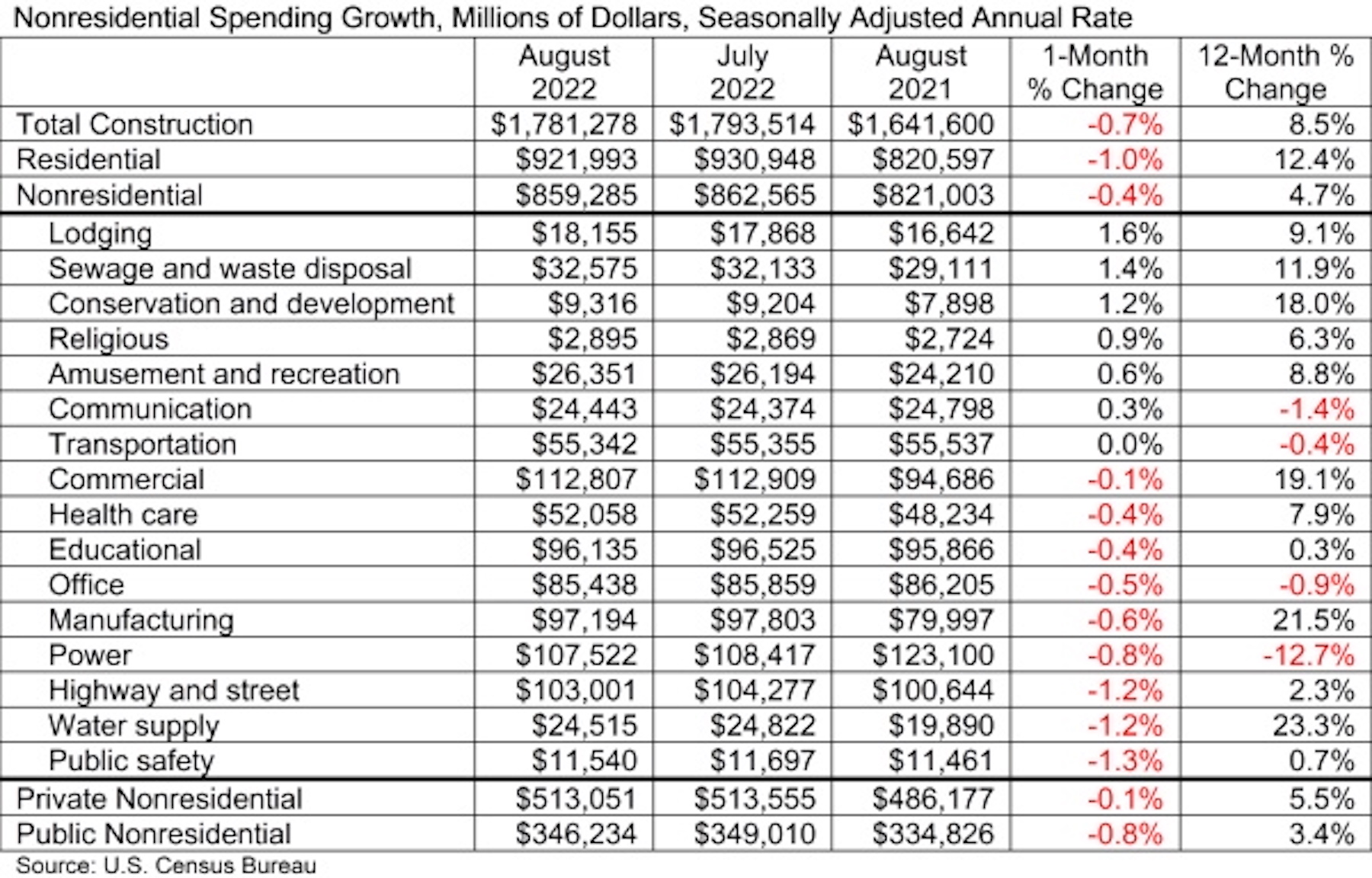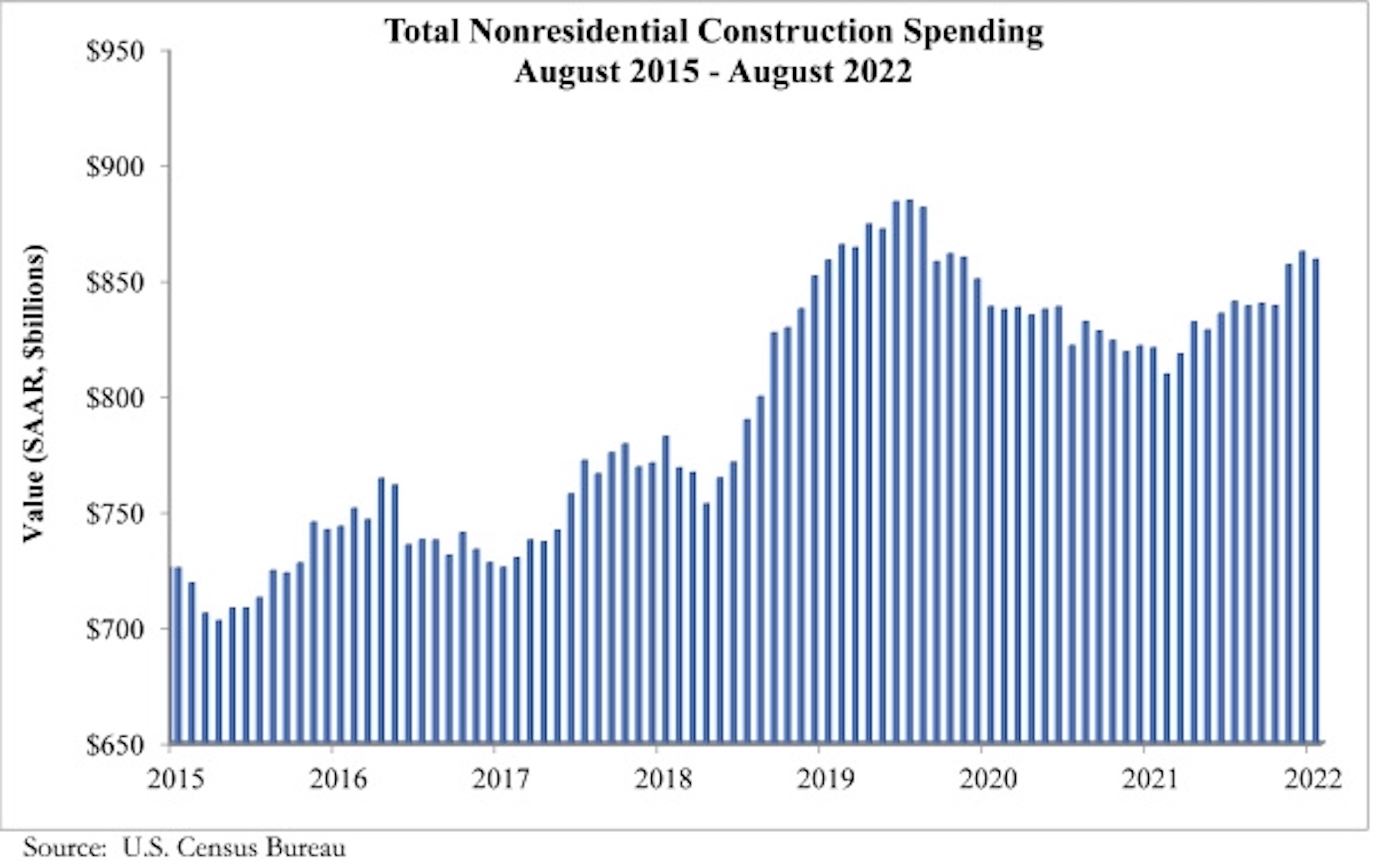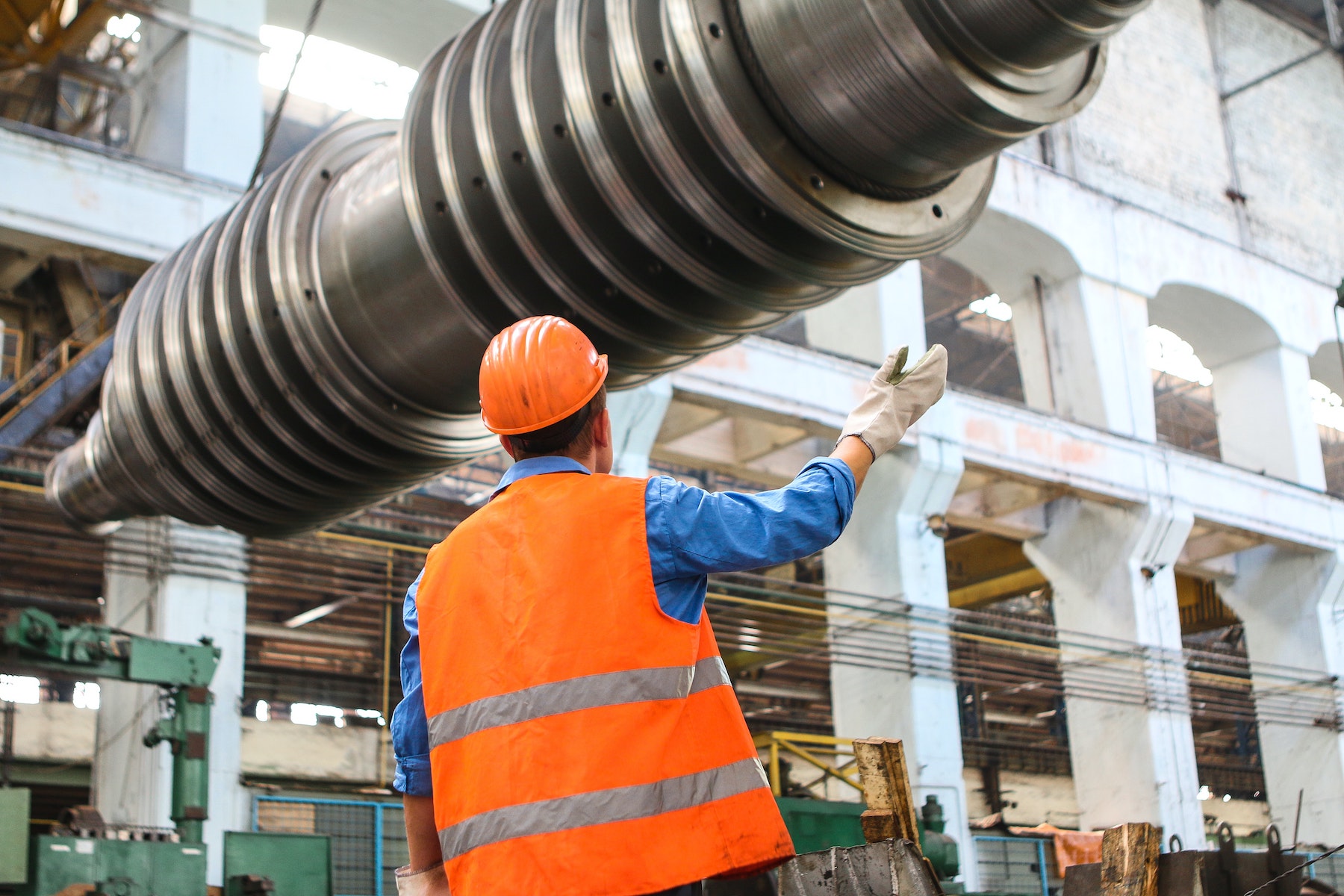National nonresidential construction spending was down 0.4% in August, according to an Associated Builders and Contractors analysis of data published today by the U.S. Census Bureau. On a seasonally adjusted annualized basis, nonresidential spending totaled $859.3 billion for the month.
Spending was down on a monthly basis in 10 of 16 nonresidential subcategories. Private nonresidential spending was down 0.1%, while public nonresidential construction spending was down 0.8% in August.
“The disparity between high contractor confidence and worrisome macroeconomic outcomes persists,” said ABC National Chief Economist Anirban Basu. “According to ABC’s Construction Confidence Index and Backlog Indicator, many contractors remain in expansion mode and expect to experience rising sales and profit margins going forward. Many also expect their employment levels to be higher in six months.
“But the nonresidential construction data indicate that consistent spending growth remains elusive,” said Basu. “Given the rising costs of project financing and delivering construction services, that is not surprising. Arguably, it is contractor confidence that is counterintuitive.
“Reconciling strong microeconomic perspective with weak macroeconomic outcomes involves looking at segment-specific data,” said Basu. “While some segments like office and lodging continue to struggle in the context of behavioral shifts wrought by the pandemic, other segments are showing significant momentum. This is especially apparent in certain public construction segments like water/sewer, highway/street and flood control.”


Related Stories
| Aug 11, 2010
2009 Judging Panel
A Matthew H. Johnson, PE Associate Principal Simpson Gumpertz & HegerWaltham, Mass. B K. Nam Shiu, SE, PEVP Walker Restoration Consultants Elgin, Ill. C David P. Callan, PE, CEM, LEED APSVPEnvironmental Systems DesignChicago D Ken Osmun, PA, DBIA, LEED AP Group President, ConstructionWight & Company Darien, Ill.
| Aug 11, 2010
Inspiring Offices: Office Design That Drives Creativity
Office design has always been linked to productivity—how many workers can be reasonably squeezed into a given space—but why isn’t it more frequently linked to creativity? “In general, I don’t think enough people link the design of space to business outcome,” says Janice Linster, partner with the Minneapolis design firm Studio Hive.







